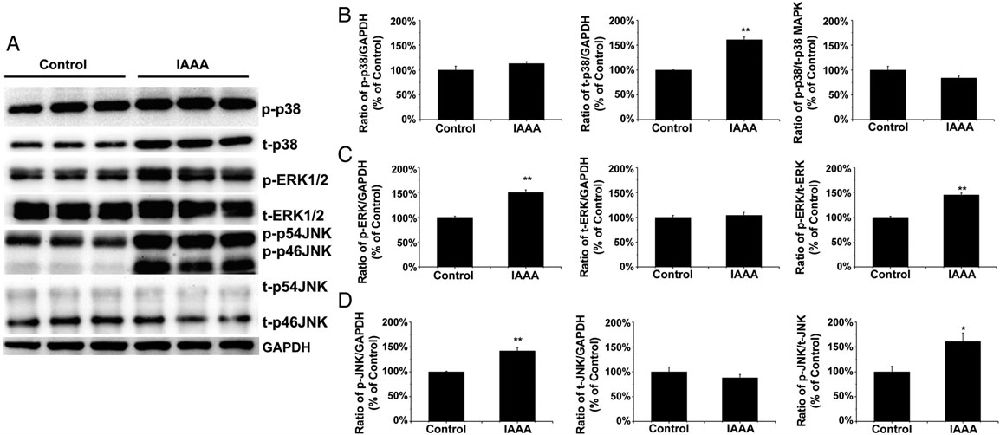博文
ABBS: Angiotensin II induces an increase in MMP-2 expression
|||
Chunmao Wang, Qian Chang, Xiangyang Qian, Chuan Tian and Xiaogang Sun
State Key Laboratory of Cardiovascular Disease, Aorta Surgery Center, Fuwai Hospital, National Center for Cardiovascular Diseases, Chinese Academy of Medical Sciences and Peking Union Medical College, Beijing 100037, China
Acta Biochim Biophys Sin 2015, 47: 539–547; doi: 10.1093/abbs/gmv047
The cellular and molecular mechanisms responsible for human idiopathic ascending aortic aneurysm (IAAA) remain unknown. Matrix metalloproteinase-2 (MMP-2) is a key enzyme for the degradation of extracellular matrix in aneurysmal walls. The aim of this study was to elucidate the role of the angiotensin II (Ang II) pathway in MMP-2 induction in IAAA aortic walls. Quantitative polymerase chain reaction and western blot analysis were used to compare the MMP-2 mRNA and protein levels in ascending aortic specimens with those in IAAA patients (n = 10) and heart transplant donors (n = 5) without any aortopathy. It was found that MMP-2 expression was significantly increased, which was associated with elastic lamellae disruption in IAAA walls. Additionally, the expression levels of angiotensinogen (AGT) and Ang II in the ascending aortic tissues from individuals with and without IAAAs were detected by western blot analysis and radioimmunoassay, respectively. The results demonstrated that the expressions of AGT and Ang II protein were significantly increased in the ascending aortic tissues of IAAA patients. Furthermore, whether Ang II induces MMP-2 expression was investigated using human IAAA walls ex vivo culture. It was found that exogenous Ang II increased the MMP-2 expression in a dose-dependent manner, which was completely inhibited by the Ang II type 1 receptor (AT1R) inhibitor candesartan and was mediated by c-Jun N-terminal kinase (JNK) activation. Taken together, these results indicate that Ang II can induce an increase of MMP-2 expression via AT1R and JNK in ex vivo cultured IAAA aortic walls, and suggest that angiotensin receptor blocker (ARB) drugs and JNK inhibitors have the potential in the prevention or treatment of IAAAs.
p38 MAPK, ERK1/2, and JNK expression and phosphorylation in IAAAs
阅读原文: http://www.abbs.org.cn/arts.asp?id=3885
相关论文:
https://blog.sciencenet.cn/blog-592748-981876.html
上一篇:ABBS: Pannexin-1 channels and their emerging functions in ca
下一篇:ABBS: Triticumoside induces apoptosis via caspase-dependen